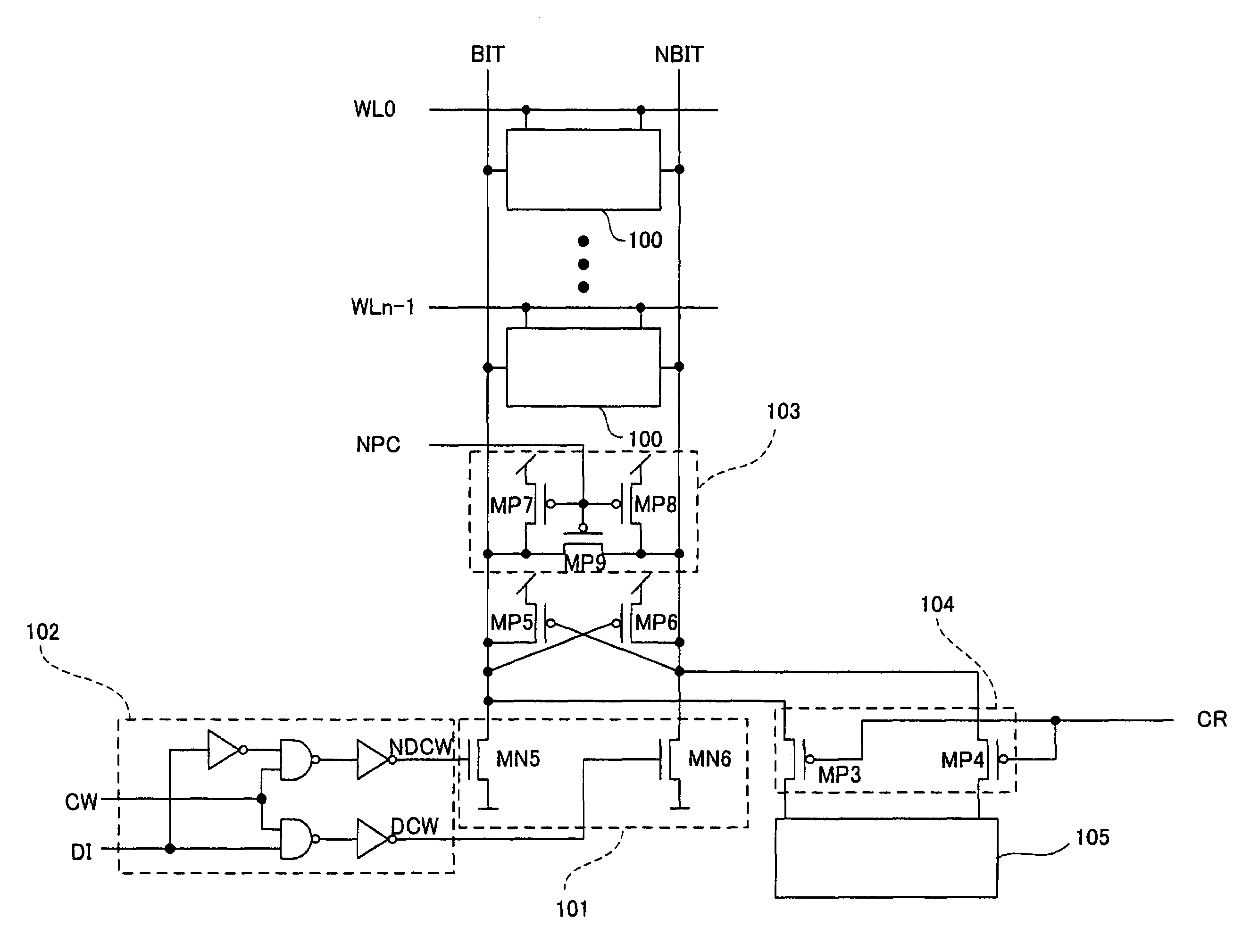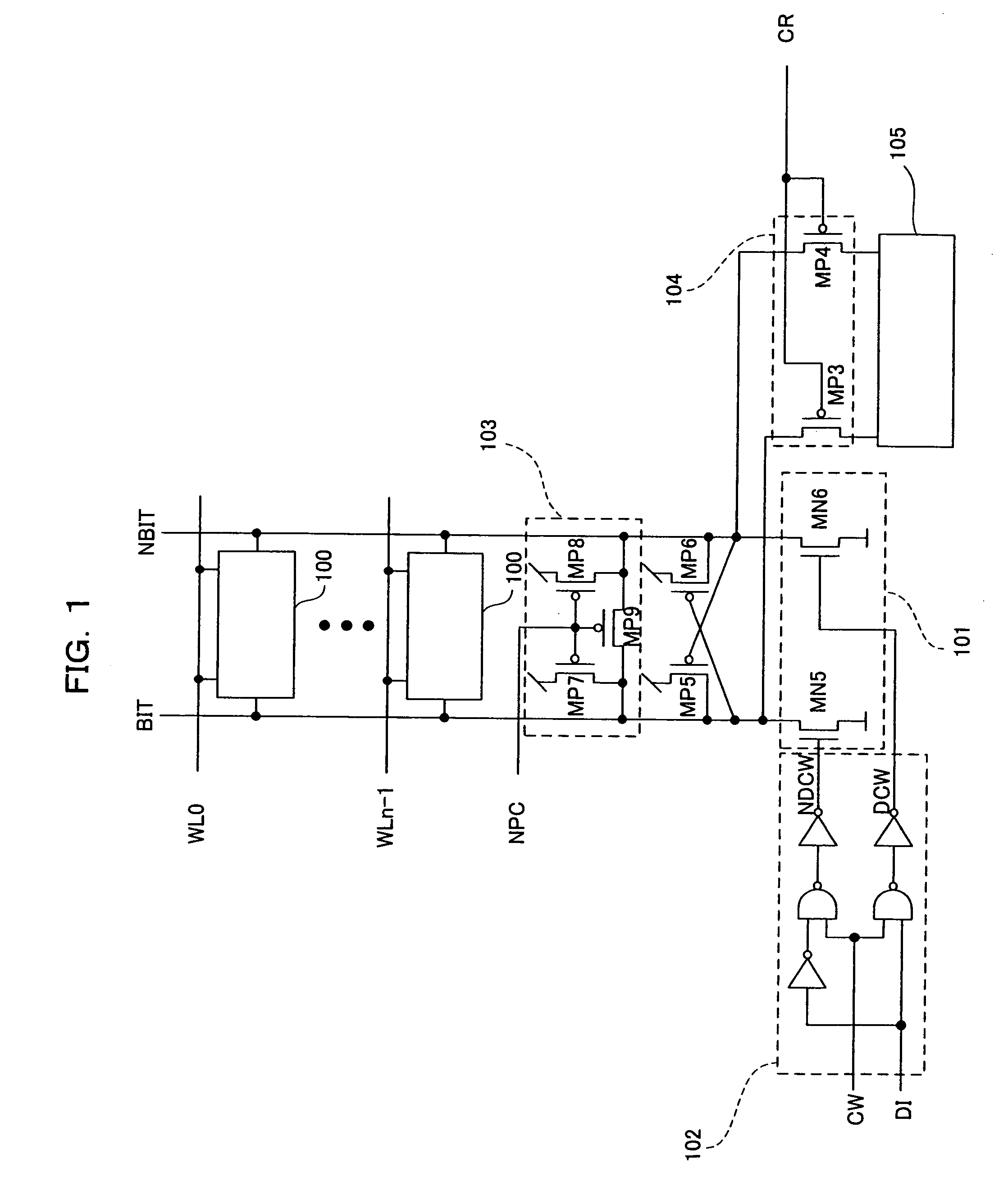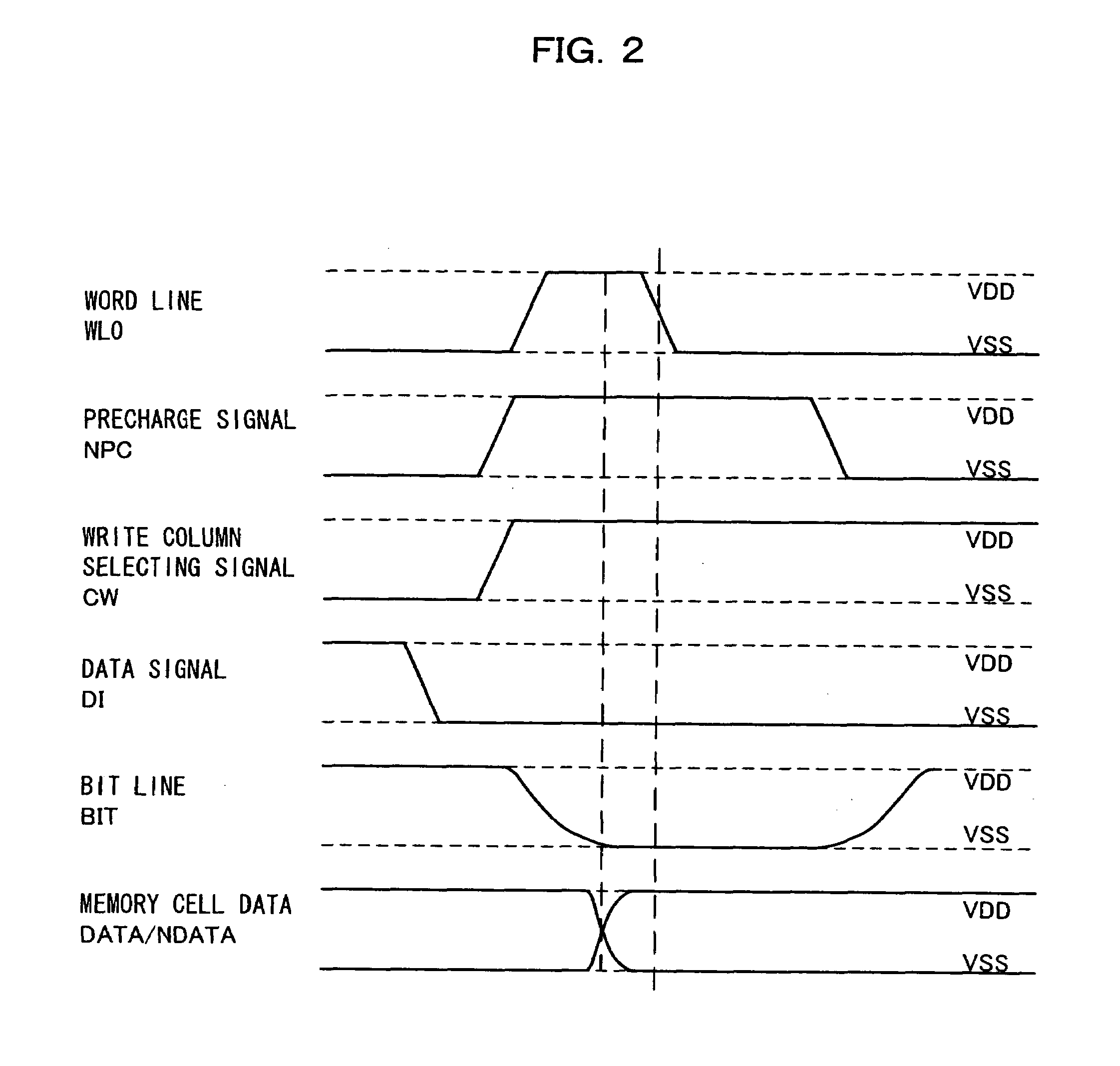Semiconductor memory device
a memory device and semiconductor technology, applied in the field of methods, can solve the problems of reducing the operating frequency and the need for an external command, and achieve the effect of high speed
- Summary
- Abstract
- Description
- Claims
- Application Information
AI Technical Summary
Benefits of technology
Problems solved by technology
Method used
Image
Examples
embodiment 1
[0037]FIG. 1 is a diagram showing the configuration of a semiconductor memory device in Embodiment 1 of the present invention.
[0038]In Embodiment 1 of the present invention, a write circuit 101 and a column selecting and data input circuit 102 are provided in place of the write column selector 701 and the write circuit 702 in the background art. The same circuit for the memory cell 100 as that shown in FIG. 7 is also provided.
[0039]The write circuit 101 is constituted by two NMOS transistors MN5 and MN6. The sources of the transistors MN5 and MN6 are connected to VSS. The drain of the transistor MN5 is connected to the bit line BIT, while the drain of the N-type transistor MN6 is connected to the bit line NBIT.
[0040]In the column selecting and data input circuit 102, a logical product NDCW of inverted data of data DI to be written and the write column selecting signal CW is generated and a logical product DCW of the data DI to be written and the write column selecting signal CW is a...
embodiment 2
[0047]FIG. 3 is a diagram showing the configuration of a semiconductor memory device in Embodiment 2 of the present invention.
[0048]In the above-described configuration of Embodiment 1, the sources of the transistors MN5 and MN6 of the write circuit 101 are connected to VSS. In Embodiment 2 of the present invention, the sources of the transistors MN5 and MN6 are connected to a negative power supply circuit 401 set to a negative potential, and the bit line BIT or NBIT is set to the negative potential at the time of writing.
[0049]As shown in FIG. 4, the substrates of the four NMOS transistors, i.e., the two drive transistors MN1 and MN2 and the two transfer transistors MN3 and MN4, of the memory cells 100 in each column are respectively connected to potentials VSSB0n to VSSBn-1. Each of the substrate potentials VSSB0n to VSSBn-1 is set lower than VSS to apply a back bias to the four NMOS transistors MN1, MN2, MN3, and MN4.
[0050]The operation based on the above-described configuration ...
PUM
 Login to View More
Login to View More Abstract
Description
Claims
Application Information
 Login to View More
Login to View More - R&D
- Intellectual Property
- Life Sciences
- Materials
- Tech Scout
- Unparalleled Data Quality
- Higher Quality Content
- 60% Fewer Hallucinations
Browse by: Latest US Patents, China's latest patents, Technical Efficacy Thesaurus, Application Domain, Technology Topic, Popular Technical Reports.
© 2025 PatSnap. All rights reserved.Legal|Privacy policy|Modern Slavery Act Transparency Statement|Sitemap|About US| Contact US: help@patsnap.com



